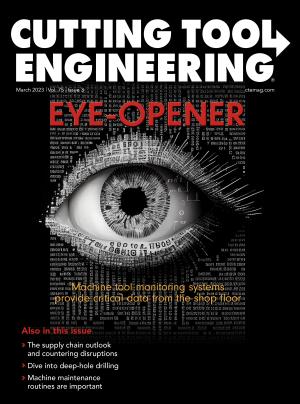“I was blind, but now I see!” This line from the Bible about the miraculous healing of a blind man also applies to parts manufacturers that implement machine tool monitoring systems. That’s because companies that install machine monitoring systems feel they are no longer blind to bottlenecks that have been plaguing their production processes. This eye-opening experience can change the day-to-day operations of production environments, as well as unlock revenue streams and increase utilization, productivity, capacity, operating equipment efficiency and more.
“It’s a different way of running when you manage by data versus being blind to what’s going on (at) the shop floor,” said Josh Davids, CEO of Scytec Consulting Inc., about the Greenwood Village, Colorado-based company’s DataXchange OEE and analytic manufacturing machine monitoring system.
He said there are numerous ways to present the data to make it useful, and DataXchange customers can implement their selections with their configuration preferences. The machine monitoring platform comes with dashboards and charts that give end users access to real-time machine status, performance and utilization metrics.
“With one button, they can generate that exact chart with all the options that they saved without having to go through and reconfigure anything,” Davids said. “It makes it very easy for our customers to get exactly what they want to see and how they want to see it.”
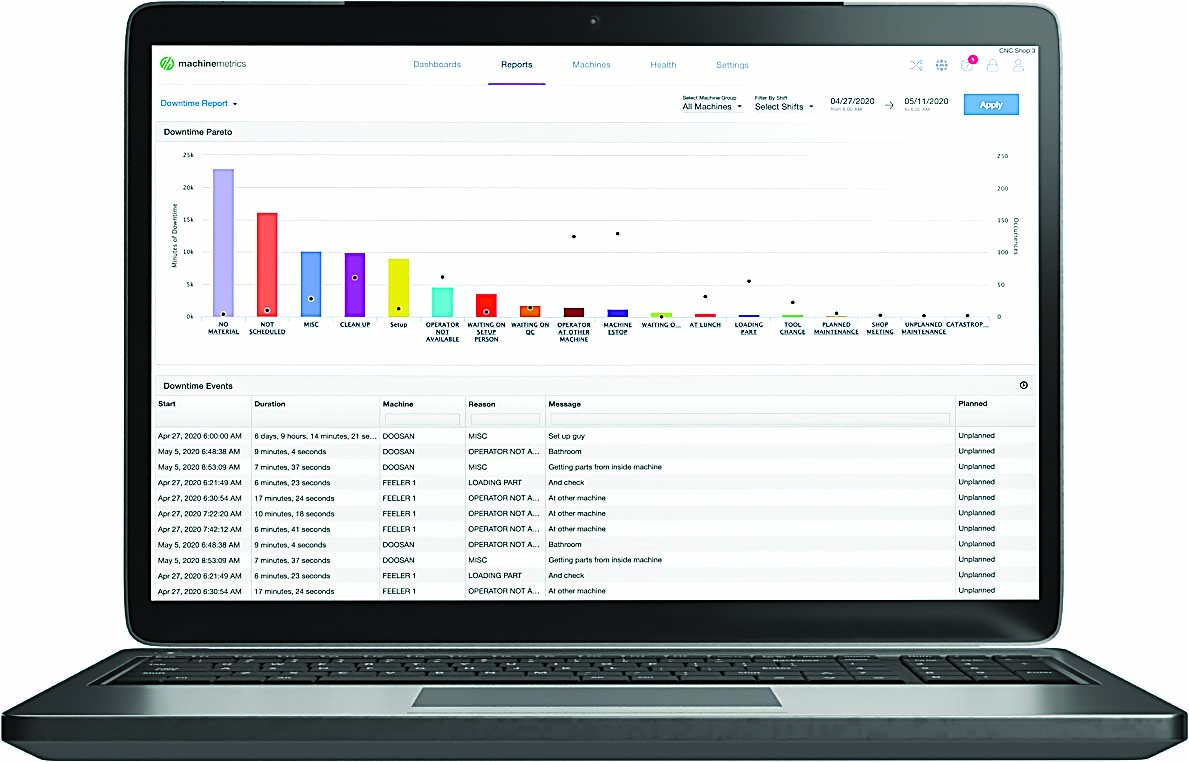
Understanding the data gathered and then being able to use it is a critical requirement for a machine monitoring platform, said Bill Bither, CEO of MachineMetrics Inc. in Northampton, Massachusetts.
“We pull hundreds of data points from machines,” he said, “but what we’re actually presenting to the user is when action needs to be taken, looking at historical performance and how performance has changed based on history and then anomalous behavior that might be incurring for specific incidents where we can apply technology like for tool wear.”
Bither said the company has extensively researched cutting tool wear and can detect it using control data sensors to help inform customers when they need to change a tool prior to failure. In addition to detecting tool wear, primarily for relatively high-volume applications with cycle times of less than 30 minutes, the system can detect anomalous behavior unrelated to wear.
“Quite often it’s because the tool is cracked or causing a problem that we can identify prior to doing quality inspection on the part,” he said, noting that the technology can be used to both improve part quality and extend tool life.
Andrea Allen, president of VersaCall USA in San Diego, concurred that data in and of itself isn’t particularly useful until it is presented in a meaningful way.
“Extracting meaningful data is what everyone’s trying to achieve,” she said.
Getting Started
VersaCall offers the VersaVision system, which features software upgrades to change applications using the same hardware. The applications are Advanced Andon to provide immediate communication of production issues and other capabilities; Machine Monitoring, which includes all the functionality of the Advanced Andon package; and Manufacturing Execution Systems, which includes all the functionality in both the Machine Monitoring and Advanced Andon packages.
“VersaVision pulls you into the next generation of manufacturing,” Allen said, “being able to see what’s happening on your manufacturing floor.”
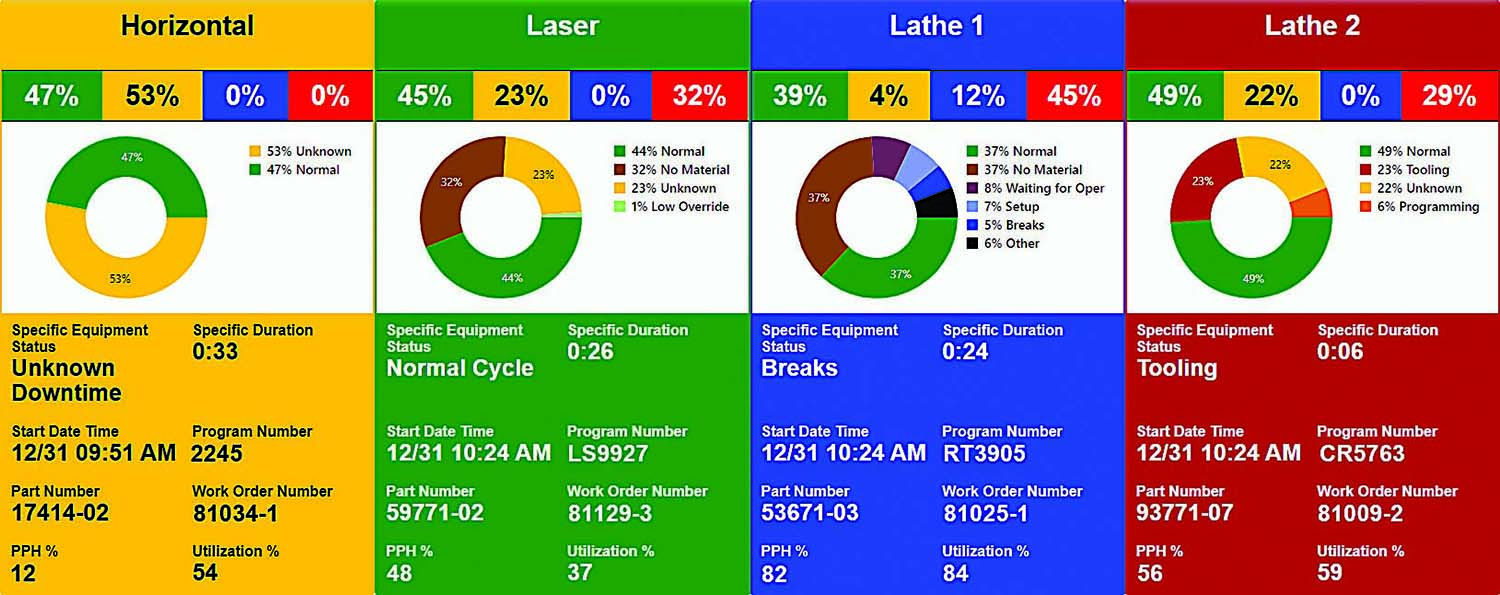
She recommends that manufacturers start with a small project to help VersaCall identify the data that will be most useful.
“Our goal is to start small both on footprint and application,” Allen said.
She said if the initiative to implement machine tool monitoring doesn’t come from the top level of a manufacturer, the process can be challenging because there tends to be a lot of resistance within a company’s existing culture.
“A corporate culture change is vitally important to be successful with a system like this,” Allen said. “If people don’t want to use the system, it makes it a lot more difficult to get great data from it. There has to be a lot of buy-in from your line workers all the way up to the top.”
As the MachineMetrics machine monitoring platform has evolved over time, Bither said the effort required to successfully implement it keeps becoming less demanding on both its and the customers’ end and makes it easier to extract value from the machine data. As a result, the company started offering free trials last year, enabling end users to try the system to see if the generated data provides value before they make a financial commitment.
Like other machine monitoring platforms, he said MachineMetrics is a subscription-based software that grows based on the increase and retention of that revenue, which motivates the company to continually provide high-quality service to a customer as opposed to just signing up one and continuing to the next.
“MachineMetrics’ pricing model is a true SaaS,” Bither said, “which means it’s easy to get started, there are no ‘maintenance’ or hidden fees, and all software updates are included forever. Essentially, we have to win your business every year to keep it, and we’ve been very successful at doing so.”
He said displaying the machine data on large monitors in a production environment generally provides a positive impact without much effort, but reaching the next level requires a change to the process and embracing a data-driven culture.
“We perform better when you have an educated champion that’s actually using that machine data and is able to configure workflows or direct the appropriate continuous improvement resources,” Bither said. “The holy grail is using machine data to continuously improve.”
Communicating Change
Davids pointed out that a customer can start simply by monitoring whether manufacturing equipment is running.
“‘Hey, I see machine seven didn’t run for two-and-a-half hours. What happened? What was preventing us from running?’ Have that conversation,” he said. “That conversation then starts to drive change.”
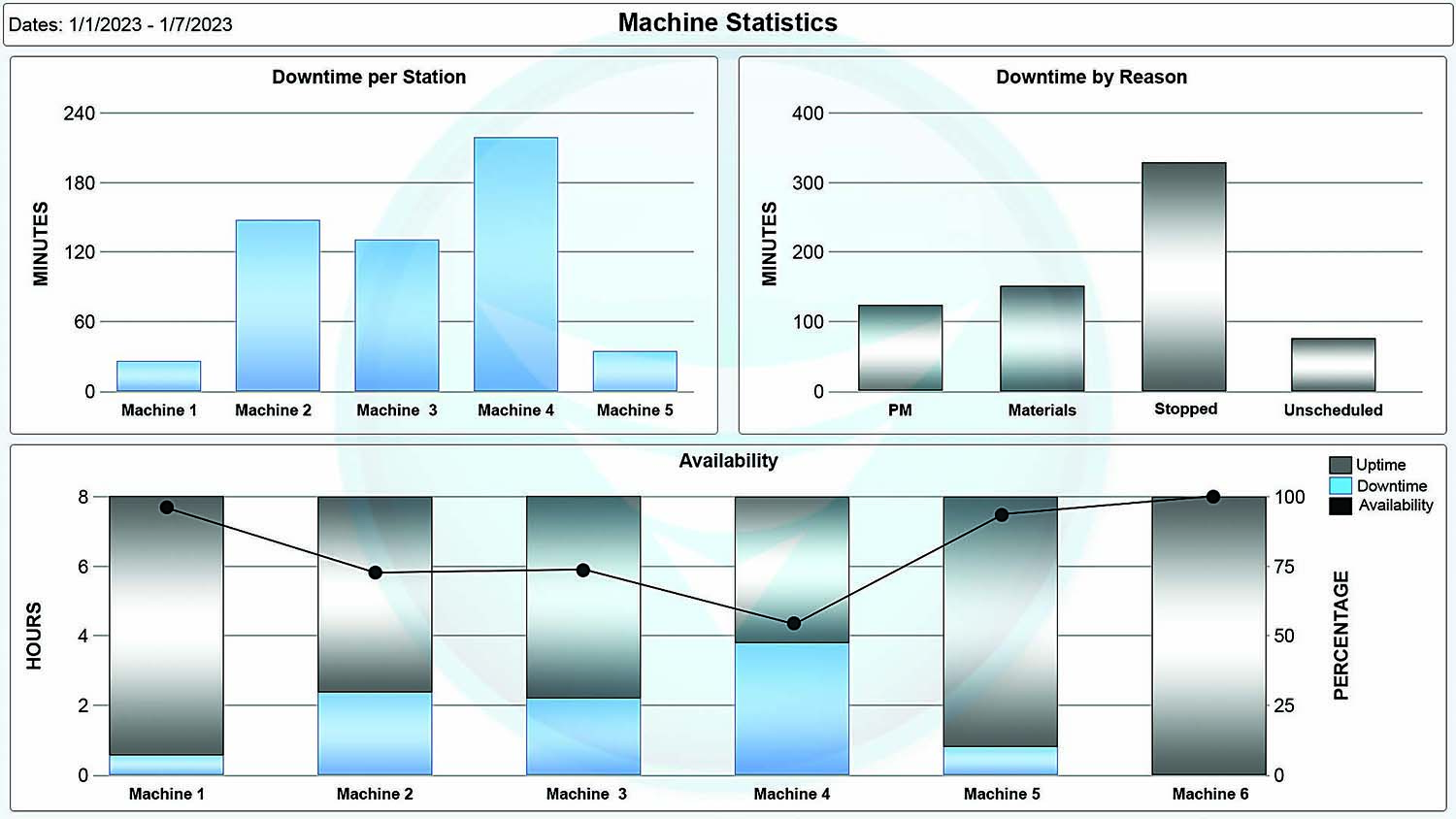
Davids said the machine monitoring system drives that change because machine operators want to tell why they were unable to run a machine, whether it was because there was no more material or they were waiting for cutting tools, a CNC program or the coordinate measuring machine to become available.
“They want to justify the issues that are preventing them from producing,” he said. “By having a very simple interface on a PC, tablet or phone where they can just hit a button, give their reason why and communicate that in real time, now people can start to understand what changes they need to make.”
The key is not to try to determine everything in advance and just to get started, Davids emphasized, letting the data drive the project forward.
“This is exactly why we do a pure month-to-month contract,” he said. “We have to win your business every 30 days is a way to look at it in the month-to-month contract.”
Qualifying Companies
The MachineMetrics platform is suitable for large plants or multiple facilities with more than 1,000 machines, and Bither said most of the company’s qualifying customers have at least 20 machining assets. MachineMetrics starts with CNC machines, where its domain expertise is, and can expand to other types of equipment, such as material-handling robots and injection molding and welding machines.
“We have the breadth to be able to expand to all their machines,” he said, adding that the platform is bridging the gap among product design, programming, manufacturing operations and enterprise resource planning and maintenance systems.
Davids described Scytec Consulting's monitoring system as “an extremely scalable solution” that is suitable for small shops and customers with a lot of CNC machines at numerous facilities across continents.
“We’ve got customers that have two CNCs, and we have customers with hundreds,” he said.
By running a machine a little bit more than a manufacturer would have, Davids said return on investment is typically from a few weeks to a few months.
“It’s never in terms of years,” he said.
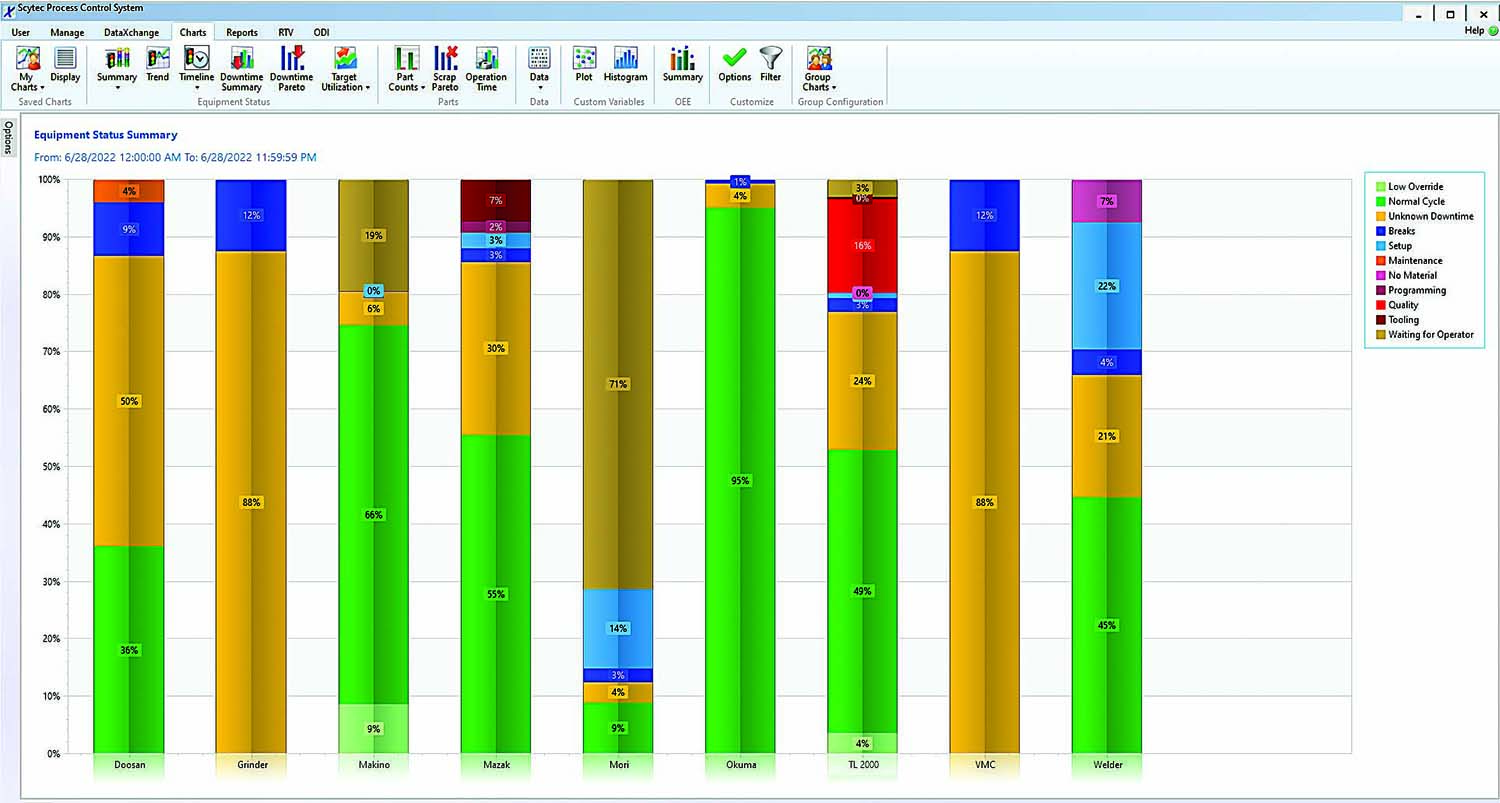
For example, Davids said by running a machine through lunch two days a month, a manufacturer gets payback for the DataXchange
software at the highest level of licensing. At the lowest level, payback may require running a machine through lunch only once a month.
Bither agreed that increasing machine uptime by an hour a month provides a positive ROI.
“Typically, our customers will see that increase much more significantly,” he said. “It could be even an hour a day.”
Payback on VersaVision is generally within three to six months after purchasing the system, Allen said. After that, payback is usually within a month or two of the payment of the annual fees.
Prior to the purchase, she said VersaCall will work with a prospective customer to identify where its specific needs are because every manufacturing system is unique even when producing the same product.
“We design — at no cost before they buy the system — a system that will work for them,” Allen said, “and we show them how it can give them the payback that they’re looking for.”
In addition to monitoring machines and capturing data, she said customers meet monthly with VersaCall to evaluate the data and find different ways to apply VersaVision.
“It helps that system grow with the customer,” Allen said, “but secondarily it helps us discover new ways that they may be able to apply the system to help provide that financial payback.”
Machine monitoring systems pay for themselves by, for example, increasing the time that machines make chips. However, Bither said the main objection from manufacturers that don’t take the plunge is that they lack time and resources, such as rigorous online networking or Wi-Fi for the machine, to dedicate to launching a monitoring project.
“MachineMetrics on its own is not a silver bullet,” he said. “But the truth is, in today’s economic environment it's never been more important to deliver the best product as efficiently as possible. So if you’re waiting for the ‘right time,’ that right time is now.”
Achieving High-Accuracy Digital Twins
To connect Vericut software for simulating CNC machining directly through the DataXchange machine monitoring system, Scytec Consulting Inc. reports that it has partnered with CGTech Inc., the Irvine, California-based developer of Vericut. Vericut’s CNC Machine Connect module works with DataXchange software to allow users to connect with and use data from CNC machines.
Having the capability to provide a live connection to a machine enables the software to more accurately simulate machining by knowing exactly how that machine is set up, said Scytec Consulting’s Josh Davids. Pulling all the live information from the machine, including system variables, cutting parameters and the CNC program, and verifying that as a final check before machining ensures that the machine and virtual environment are truly set up the same.
“Your simulation verification is going to be accurate,” he said.
Without that capability, Davids said potential issues can arise when the CNC program goes to the shop floor.
“What happens if offsets were different from what was initially expected or someone needed to change the CNC program?” he said. “By doing the last-minute verification right before it runs, you ensure that those mistakes do not creep in and cause a problem that was unexpected.”
Davids said users can see the machine model and know exactly what the machine is doing when they have a highly accurate digital twin. Coolant splashing on a machine window, for example, can cloud what is happening during machining.
“You’re hearing some very unlikely noise that you don’t want to be hearing,” he said. “You can see exactly what’s happening through the digital twin. It brings the concept of digital transformation to another level that simply is not possible any other way.”
Although Scytec Consulting introduced the connectivity capability with Vericut for machines controlled by Fanuc series 0 and 30 controls, Davids said it soon will be available for additional machine controls.
For more information about CGTech, call 949-753-1050 or visit www.cgtech.com.
— Alan Richter
Contact Details
Related Glossary Terms
- computer numerical control ( CNC)
computer numerical control ( CNC)
Microprocessor-based controller dedicated to a machine tool that permits the creation or modification of parts. Programmed numerical control activates the machine’s servos and spindle drives and controls the various machining operations. See DNC, direct numerical control; NC, numerical control.
- coolant
coolant
Fluid that reduces temperature buildup at the tool/workpiece interface during machining. Normally takes the form of a liquid such as soluble or chemical mixtures (semisynthetic, synthetic) but can be pressurized air or other gas. Because of water’s ability to absorb great quantities of heat, it is widely used as a coolant and vehicle for various cutting compounds, with the water-to-compound ratio varying with the machining task. See cutting fluid; semisynthetic cutting fluid; soluble-oil cutting fluid; synthetic cutting fluid.
Contributors
MachineMetrics Inc.
844-822-0664
www.machinemetrics.com
Scytec Consulting Inc.
720-482-8250
www.scytec.com
VersaCall USA
858-401-6592
www.versacall.com


